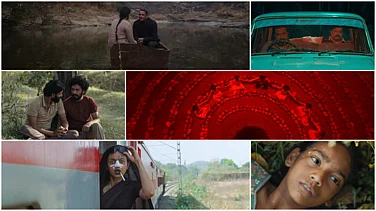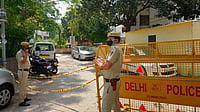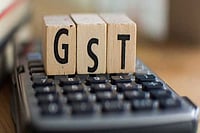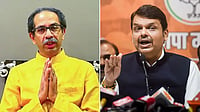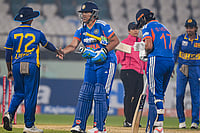Probably, they don't need to. "STAR Plus can never be a threat to us," says a Doordarshan official. "Even with Rathikant Basu at the helm." That assertion may be true, but some of DD's recent decisions—the ouster of Prannoy Roy's first-rate news shows, the lopsided revision of its rate card, the sacking of Shakuntala Mahawal, deputy director-general (news), among other things—have exposed the continuing chaos in its corridors. In contrast, STAR Plus, which launched its Hindi band barely five months back, has quickly established itself as a viable advertising and programming alternative. Doordarshan's national network, by virtue of being a terrestrial channel with 90 per cent penetration, remains unscathed. Sheer reach, not the bureaucracy which runs it, is its strength.
"Doordarshan is huge. It reaches over 90 per cent of TV households. Cable and satellite TV penetration is only about 25 per cent," Basu had told Outlook during the launch of STAR Plus' Hindi band. Yet, he had sounded surprisingly sure of the success of his experiment. He had perhaps anticipated the indirect help that has been forthcoming from Mandi House. After all, Basu had occupied Doordarshan's top post long enough to grasp precisely how the organisation functions.
The exodus of programmes from Doordarshan to STAR hasn't stopped since the Hindi band came into existence.
Chandrakanta, Tu Tu Main Main, Living on the Edge, The Priya Tendulkar Show, The News Tonight and Good Morning India...they've all been at the receiving end of Doordarshan's inexplicable adversarial behaviour since the middle of last year. The result: these commercially successful and critically acclaimed shows have all ended up on the Basu bandwagon. Says Dheeraj Kumar of Creative Eye:
"STAR has made a commendable impact with its programme mix. Prannoy Roy's news programme—the immediacy and the visual content, to be precise—is truly impressive." Professionalism and an unwavering commitment to international standards of production are the principal ingredients of the STAR formula. On the other hand, Mandi House continues to bumble on. "Like all other government organisations, it is very bureaucratic. But it is more the system than the individual that is to blame. They do not have enough professionals manning the medium," says Amit Khanna of Plus Channel.
Perhaps the worst aspect of Doordarshan's approach is the fact that it continues to treat private software producers as adversaries rather than allies. Its new rate card has hiked telecast fees and reduced free commercial time (FCT). Consequently, many programmes, especially those that do not draw their sustenance from Hindi films, have suddenly become commercially unviable. For one, New Delhi Television's Good Morning India, a one-hour breakfast show which had only just begun to warm up after a rather uninspiring start, fell prey to the rate revision. Once again it was STAR Plus that benefited. Good Morning India, now a two-hour programme, has reappeared as an important component of the growing STAR Plus spread.
The merry men of Mandi House never give up. They have now singled out Om Namah Shivay, Doordarshan's new mega-serial produced for the national network by the Mumbai-based Dheeraj Kumar, who also devises and markets the money-spinning Rangoli. Doordarshan has approved another similar serial, Gulshan Kumar's Shiv Mahapuraan, for its Metro Channel. Understandably, Dheeraj Kumar is seeing red. Admits a senior DD official: "The move is rather strange. How can two serials on the same subject not affect each other adversely?" All objections have so far fallen on deaf ears and Gulshan Kumar's saga of Lord Shiva is due to go on air on March 30. Asked to comment on the development, Dheeraj Kumar simply says: "That's a question you need to ask Doordarshan."
Though questions are rarely answered with any degree of coherence by the Doordarshan honchos, the Mumbai film actor-turned-software producer is not unduly perturbed about the new rate card. "DD's reach cannot be matched. So I don't see why reduction in FCT and increase in fees should be a problem," he says. But Khanna of Plus Channel, which produces a host of shows for DD and is now doing Jubilee Plus for STAR Plus, fears that the quality of programmes on DD will suffer if producers are forced to shell out more money than they can afford to. "DD has been becoming very greedy. It wants to retain 80 per cent of the revenue generated by the programmes that it telecasts.
The quality of Doordarshan's shows is bound to fall as a result." Quality, of course, is the strength of STAR Plus' 'Indian' band, which has opened its doors to only those software producers who are capable of delivering programmes that look and sound spotless, particularly in terms of technology. Says Niret Alva, the director of Living on the Edge and The Great Escape: "When you do a programme for STAR, you work very closely with them. They have a major stake in the success of the programme. Doordarshan, in contrast, is too huge and impersonal. So many things happen there that individual pro-grammes cease to matter."
Shrey Guleri, who is the executive producer of Prime Channel, the makers of STAR Plus' top three shows, Chandrakanta, Tu Tu Main Main and Ta Ra Rum Pum, agrees: "In Doordarshan, your equations with the officials in power matter a great deal. The place is too bureaucratic and unprofessional." So, despite the loss of the large viewer-ship that Doordarshan guarantees, a host of first-rate software producers—Roy's NDTV, Nirja Guleri's Prime Channel, Ramesh Sippy, Nikhil and Niret Alva of Miditech, Sanjeev Kohli of Metavision, Priya Tendulkar and Anupam Kher's Media Entertainment Company—have headed
STAR-wards. But has the move paid off? Both producers and media planners feel that it has. Says Guleri: "No matter what people say, be it positive or negative, the fact remains that STAR Plus is a happening channel. It is widely talked about." Isn't that precisely what advertisers dream of? In the past, STAR Plus attracted advertising on the strength of its image as a channel for affluent, English-speaking, widely-travelled viewers. "It was the market perception that propelled the channel," says one software producer. "Today, it is on a much better wicket than ever before because it is also picking up higher television rating points (TRPs). Without losing its class viewers, who can watch English shows after 9 pm, it has acquired viewers from other channels." Indeed, before the drive to Indianise STAR Plus began, it had a viewership of 1.5 per cent. Today, the figure is close to four per cent, despite the fact that committed STAR Plus viewers in south India seem to have been put off by the channel's Hindi-isation. In the case of STAR Plus' top shows, TRPs go as high as 15. Naturally, even a big advertiser like Hindustan Lever is reported to have diverted Rs 15 crore from its budget to STAR Plus' Hindi band.
The growth of STAR Plus' Sunday morning slot, which was one of the channel's weakest links, has been especially dramatic. "Regular STAR viewers had no problem in watching Hindi programmes in the morning," explains Guleri, whose company delivered all the three shows that made up the morning slot—Ta Ra Rum Pum from 8 am to 9 am, Chandrakanta from 9 am to 10 am and Tu Tu Main Main from 10 am to 10.30 am. The slot has registered an impressive 350 per cent growth in the last few months.
TWO of these programmes, Ta Ra Rum Pum and Tu Tu Main Main, have now been shifted to the night band in an effort to build that up as well. The results have been encouraging. While Tu Tu Main Main, telecast twice a week at 8 pm in a 30-minute slot that is devoted exclusively to sitcoms, attracts 300 seconds of advertising, Ta Ra Rum Pum, which has registered the fastest pick-up for a music programme in the history of Indian TV, draws anything between 180 to 240 seconds of ads. The Chandrakanta ad volume is in the vicinity of 500 to 550 seconds.
Under prevailing Hong Kong laws, there is a statutory restriction on the volume of advertising a programme can book—600 seconds for an hour-long show, 300 seconds for a 30-minute programme. Encouragingly for Basu, STAR Plus' top programmes have quickly caught up with Zee in terms of the spot buying rates that they command—Rs 45,000 to Rs 50,000 per 10 seconds.
Of course, as things stand, STAR's competition is with the other satellite channels, and not with Doordarshan, though the latter has been raided for programmes as well as manpower. Says Anuradha Tiwari, creative director, Media Entertainment Company: "Door-darshan has developed a certain pro-file over the years. It is always a matter of pride for a producer to have a show on Doordarshan." STAR Plus, clearly, has miles to go before it can afford complacency. "STAR's choice of shows has been smart—they've chosen serials that viewers were already hooked on," adds Tiwari.
It still is essentially a David versus Goliath skirmish, and will perhaps remain so for some years to come. Only, the end might turn out to be a repeat of the hoary tale if Doordarshan doesn't alter its long-term focus and embraces the dual virtues of professionalism and commitment to quality. For, indications are that STAR's sparkle is only going to get brighter as the competition hots up.













